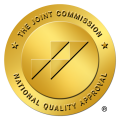Treating Complex PTSD
at Your Treatment Facility
Trauma not only has the potential to permanently wound an individual during childhood, but its effects can also last through adulthood.
What is Trauma
According to the American Psychological Association, “Trauma is an emotional response to a terrible event like an accident, rape or natural disaster.”1
Types of Trauma
When an individual becomes the victim of a traumatic experience, their day-to-day tasks and functions become a challenge. Traumatic experiences come in many forms.
Physical Assault:
Physical assault is identified as an attack on an individual. Physical assault includes being attacked by another individual or a group, with or without a weapon.
According to prevention-violence.com, forms of physical assault include:2
- Provocation: insults, death threats.
- Intimidation: making a fist, pushing, stalking, stealing/throwing objects.
- Brutality: attacks, struggles, fights.
- Punches and injuries: bites, bruises, injuries, dislocations, fractures.
- Assault with a weapon.
- Armed robbery (with a firearm or using force or the threat of force).
Sexual Assault
Sexual assault includes direct sexual contact or sexual behavior without explicit consent from the victim.3
Types of sexual assault include:
- Attempted rape
- Fondling or unwanted sexual touching
- Forcing a victim to perform sexual acts (i.e., oral sex, penetration)
Domestic Violence
The National Coalition of Domestic violence identifies domestic violence as “The willful intimidation, physical assault, battery, sexual assault, or other abusive behavior as part of a systematic pattern of power and control perpetrated by one intimate partner against another.”4
Forms of Domestic violence includes:
- Physical
- Sexual
- Psychological
- Emotional abuse
Emotional Abuse
Emotional abuse is identified as continuous emotional mistreatment.
Forms of Emotional abuse include:5
- Intimidation
- Criticism
- Undermining
- Being made feel guilty
- Economic abuse
- Telling you what you can and can’t do
Parental Neglect
Parental neglect, also identified as child neglect, includes the failure to provide a child with their necessities.
Areas of Child Neglect include:
- Nutrition
- Education
- Hygiene
Bullying
Bullying can include unwanted and aggressive behavior amongst school-aged children. Bullying may also include a real or perceived power imbalance between the victim and the bully. Repetitive bullying behavior can result in physical harm as well as psychological.
Natural Disasters
Events such floods, hurricanes, earthquakes, tornadoes, and tsunamis, which damage terrain and destroys lives, are all considered natural disasters. Natural disasters leave horrifying, permanent memories for victims. Victims of traumatic natural disaster evets often develop mental and physical illnesses from the memories of the event.
Accidents
The Anxiety and Depression Association of America states, “It’s normal that during the healing process, you may begin to notice signs of increased stress such as Post Traumatic Stress Disorder (PTSD), anxiety, depression, anguish, fearfulness, issues with sleep, reoccurring nightmares about the crash and more.”6
Complex Trauma vs. Trauma
American psychiatrists, Dr. Judith Herman of Harvard University, suggested a new diagnosis in 1988, complex trauma.7
Most traumatic events are time-limited. In some cases, though, people experience continuing chronic trauma that repeats itself for months or even years at a time. The severe psychological hard that occurs with prolonged negative experiences may extend outside the normal realms of trauma. In these situations, the victim would be experiencing complex trauma.7
What is Complex PTSD (C PTSD)?

Complex PTSD, also known as C-PTSD, refers to the lasting damage that occurs from continuing trauma. C PTSD will likely have the same symptoms as PTSD as well as some additional side effects.
C PTSD Symptoms and Traits
- Behavioral difficulties such as impulsivity, aggressiveness, sexual acting out, alcohol/drug misuse, and self-destructive behavior
- Emotional difficulties such as rage, depression, and panic
- Cognitive difficulties such as dissociation and pathological changes in personal identity
- Interpersonal difficulties such as chaotic or strained personal relationships
- Somatization, resulting in visits to medical practitioners
The National Health Service of UK identifies that symptoms of C PTSD as like the symptoms of PTSD, but include:8
- Feelings of shame or guilt
- Difficulty controlling emotions
- Periods of losing attention and concentration, also known as dissociation
- Physical symptoms such as headaches, dizziness, chest pains, and stomach aches
- Cutting oneself off from friends and family
- Relationship difficulties
- Destructive or risky behavior such as self-harm, alcohol misuse, or drug abuse
- Suicidal thoughts
Misdiagnosis of C PTSD
An individual may be diagnosed with C-PTSD by a doctor or medical professional if a pattern of traumatic impact is prolonged for years or even months.
Misdiagnosis of Complex PTSD as Borderline Personality Disorder
Borderline personality disorder or BPD is identified as a pervasive mental disorder that can be lifelong. BPD can affect one’s interpersonal relationships as well as mood and behavior.9
Although their behaviors overlap, BPD and C-PTSD are different mental disorders. Significant differences between the two disorders include that:9
- Those with BPD experience fear of abandonment. Those with C-PTSD experience fear of being threatened.
- Those with C-PTSD experience feelings of shame. Those with BPD also experience feelings of shame and resort to self-harm.
Misdiagnosis of Complex PTSD as Traumatic Grief
Traumatic grief refers to someone’s reaction to a sudden loss, such as a violent accident, or an expected death, such as a prolonged illness. If an individual’s grief is severe, prolonged, or interfered with their functioning, they may be experiencing traumatic grief.10
According to the Mayo Clinic, traumatic grief or complicated grief includes symptoms such as:11
- Intense sorrow, pain, and rumination over the loss of a loved one
- Focus on little else but the loved one’s death
- Extreme focus on reminders of the loved one or excessive avoidance of reminders
- Intense and persistent longing or pining for the deceased
- Problems accepting death
- Numbness or detachment
- Bitterness about the loss
- Feeling that life holds no meaning or purpose
- Lack of trust in others
- Inability to enjoy life or think back on positive experiences with the loved one
Although traumatic grief is prolonged bereavement, it is commonly misdiagnosed in the place of C-PTSD. An article by Psychiatry Advisor that traumatic grief is a reaction to the loss, but PTSD is the reaction to the presence of a threat.12
The Connection Between C PTSD and Addiction
The U.S. National Library of Medicine states, “From a psychological and neurological perspective, addiction is a disorder of altered cognition. The brain regions and processes that underlie addiction overlap extensively with those that are involved in essential cognitive functions, including learning, memory, attention, reasoning, and impulse control.”13
Research suggests that addiction behavior derives from an individual’s negative perception of themselves or situation. This factor proves that an individual suffering from addiction has unidentified perceptions, experiences, or traumas.
Treating C PTSD
The best therapy for a victim of trauma depends on their case and individual challenges.
Dual Diagnosis for C PTSD and Addiction
Dual diagnosis is a treatment for someone challenged by both substance misuse and a mental health disorder. It wasn’t until the 1990s that individuals seeking treatment for mental illness and struggling with substance began to receive treatment after it was discovered that underlying psychiatric disorders link to substance abuse issues.14
Detox
A detox plan or program directly targets substance use disorder. Detoxing requires monitoring by a doctor or medical professional due to the potential development of severe symptoms during the process.
Inpatient
Patients with substance use disorders have the option to check into a monitored and clinically supported facility for addiction recovery. Inpatient program facilities offer 24-hour medical support, with trained staff also available to support patients emotionally.
Outpatient
Like an inpatient program, individuals are supported through addiction recovery and monitored by a doctor or medical professional, without, however, having to check-in to a facility.
Trauma Treatment Methods
EMDR
Eye Movement Desensitization and Reprocessing, or EMDR, is a psychotherapy treatment meant to alleviate the distress that one associates with traumatic experiences and memories.
During a typical EMDR session, patients are attentive to brief, emotionally disturbing material while the therapist uses their hands or EMDR tappers to reduce the distress cognitively linked with the negative memories.
Trauma Recovery Model
The Trauma Recovery Model is defined as an evidence-based approach to healing. This model combines elements of social skills training, psychoeducational and psychodynamic techniques. It also emphasizes peer support, and its focus is on victims between the ages of 18 to 55 with severe mental or substance abuse disorders.15
Trauma-Informed Care
Trauma-informed care is an approach the “…recognizes the presence of trauma symptoms and acknowledges the role trauma may play in an individual’s life- including service staff. On an organizational or systemic level, Trauma-Informed Care changes organizational culture to emphasize respecting and appropriately responding to the effects of trauma at all levels.”16
Due to the high awareness of all the elements that may impose trauma, trauma-informed care’s approach is mindful of any form of unintentional re-traumatization.
CBT
Cognitive-behavioral therapy is a psychological treatment used to reestablish the connections between behaviors and thoughts. CBT has shown to be effective for a variety of disorders, including not only trauma but also depression, anxiety disorders, substance use disorders, eating disorders, and severe mental illnesses.
Exposure Therapy
Exposure therapy is a treatment that helps individuals overcome their traumatic fears. Exposure therapy addresses:17
- Phobias
- Panic Disorder
- Social Anxiety Disorder
- Obsessive-Compulsive Disorder
- Posttraumatic Stress Disorder
- Generalized Anxiety Disorder
https://www.apa.org/topics/trauma
http://www.prevention-violence.com/en/int-121.asp
https://www.rainn.org/articles/sexual-assault
https://adaa.org/learn-from-us/from-the-experts/blog-posts/consumer/how-cope-trauma-after-accident
https://www.ptsd.va.gov/professional/treat/essentials/complex_ptsd.asp
https://www.nhs.uk/mental-health/conditions/post-traumatic-stress-disorder-ptsd/complex/
https://www.psychologytoday.com/us/blog/understanding-ptsd/202006/is-it-bpd-or-cptsd
https://www.nctsn.org/what-is-child-trauma/trauma-types/traumatic-grief
https://www.mayoclinic.org/diseases-conditions/complicated-grief/symptoms-causes/syc-20360374
https://www.ncbi.nlm.nih.gov/pmc/articles/PMC3120118/
https://www.apa.org/ptsd-guideline/patients-and-families/exposure-therapy




